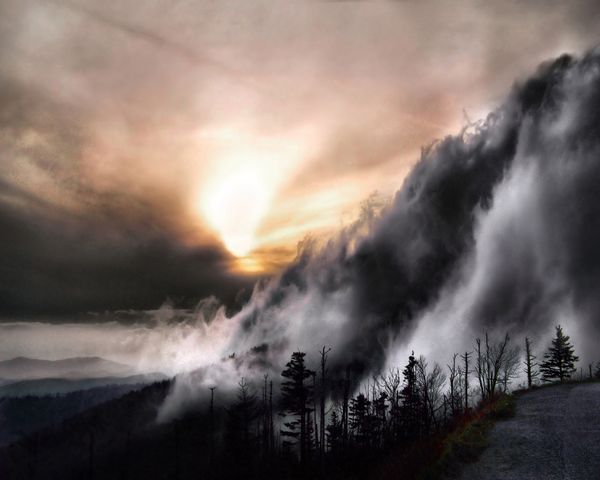What Happened To My Pics
Nov 1, 2011 10:01:57 #
Sensei wrote:
this may or may not work out for you, but I have taken photos from a 2 mg camera and managed to get an acceptable 12x 14 out of it by simply going into elements and then clicking on image and then re-size. you can than increase the size of the image by changing both the dimensions and the dpi. I wouldn't try it with portraits but on a landscape it worked quite well. I suggest yo do this with one photo and have it printed before you do something else
I remember reading something about resizing in increments. Something about resizing up, going back to the work screen, then resizing again, etc., etc., in small increments of course.
Nov 1, 2011 10:33:43 #
drkeene wrote:
I am also new to this blog, and don't know if I wi... (show quote)
DrKeene,
Your solution seems to work for you, but could you imagine how many cards I would need, I shoot on the average week 2-3K photos. I would need a room to house my cards alone.
A far better solution is an external hard drive.
Nov 1, 2011 10:46:17 #
Not that I know of, Donl. copying, pasting, file transferring won't degrade any file, JPEG, or otherwise.
Donl wrote:
Thanks, gizzy, info about each time saved compromises quality hits a nerve as I have created duplicate files as back-ups. Also, I have two directories in my chip. One captures my shooting, then after initial adjusting any contrast issues, etc. I transfer them to a separate directory in order for new shoots to stay separate until editing. Will transferring to separate directory on the chip give similar compromise?
Nov 1, 2011 11:21:29 #
You have received good advice on this forum so far regarding the degradation of jpeg photos so I won't repeat. This is a good excuse to upgade your camera and the sensor on the Canon T2i is very good although not "full size". You might also want to take a look at ACDSee processing and organizing software. (I use ADCSEE Photo Pro 3) It allows processing of RAW files as well as jpegs and others while automatically preserving the original. Wicked cool stuff.
Nov 1, 2011 12:00:37 #
If you have photo editing software you can change the (increase) resolution before printing or sending to an online print place. Or if you have or are willing to buy Topaz filters you can "dejpeg" your images.
Nov 1, 2011 13:01:29 #
commodore-don wrote:
I opened the pictures in Photoshop then saved them in Genuine Fractals Format (Now OnOne Software's Perfect Resize).
Nobody seeing those two lovely pictures would ever guess that they came from a 2 MP camera.
So here's another testimonial for Perfect Resize, formerly Genuiine Fractals.
Nobody seeing those two lovely pictures would ever guess that they came from a 2 MP camera.
So here's another testimonial for Perfect Resize, formerly Genuiine Fractals.
I have also done large poster prints from a compact camera with 7 mp. Several things to know. First, 300 dpi is not necessary for good prints, despite the standards of magazines and books. Scott Kelby, and others, says 240 dpi is plenty.
In PhotoShop, you can emulate the Perfect Resize software you are recommending, by increasing the size of your image file 10% at a time until you reach the size you want to print at. I would love to see a comparison of that manual method, which take a few minutes for a large print, with the software's results.
Viewing distance from a large print is also an issue, and that will allow even further reductions in the dpi. Billboards, as an extreme example, are printed at 40 dpi. So a poster to be displayed behind a sofa could be printed at 180 dpi and still look good from 3 or 4 feet away.
Smoky Mountains Printed at 30 by 40. Kodak 8 mp

Nov 1, 2011 15:59:27 #
Scott Kelby is one of the best authors on digital photography. He really knows his stuff, and explains it in simple terms, easy to understand... and with a twist of humor thrown in for good measure.
architect wrote:
quote=commodore-don I opened the pictures in Pho... (show quote)
Nov 2, 2011 11:19:08 #
Don:
It sounds like you are creating JPEG artifacts.I have gotten stunning 13x19 prints from a six mp camera. Files of 3648x2726 should be fine for 14x20. Lower res is problematic.
As noted by others, repeated saving of files in an editor will degrade image even if set for maximum resolution.While editing use TIFF or PSD and convert to JPEG only as the last step. Also be aware that there is inherent cropping because of different HxW ratios. Your hi res original file is 1.33; 14x20 is 1.43.
A good review of JPEG artifact causes and cures:
http://www.scantips.com/basics9jb.html
Good luck, Len
It sounds like you are creating JPEG artifacts.I have gotten stunning 13x19 prints from a six mp camera. Files of 3648x2726 should be fine for 14x20. Lower res is problematic.
As noted by others, repeated saving of files in an editor will degrade image even if set for maximum resolution.While editing use TIFF or PSD and convert to JPEG only as the last step. Also be aware that there is inherent cropping because of different HxW ratios. Your hi res original file is 1.33; 14x20 is 1.43.
A good review of JPEG artifact causes and cures:
http://www.scantips.com/basics9jb.html
Good luck, Len
Nov 2, 2011 11:42:05 #
Store you files in TIF format. That will take care of the lossy compression. No more loss of quality in subsequent steps. The other, compare the picture quality between Picasa and another software. Thumbnails look good on Picasa. Anything larger is not meeting my expectations.
If you want to reply, then register here. Registration is free and your account is created instantly, so you can post right away.





